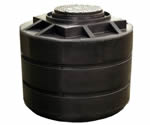
07 Jul Tank Water
DID YOU KNOW
292 schools in NSW were found to have up to 12 times the maximum level of lead in their drinking water (McDougall and Bissett, 2008).
Contaminants
Water quality problems from tank water may arise from:
- Micro-organisms from faecal contamination may arise from animal droppings by birds, lizards, mice, rats, possums, dead animals and insects in the gutters or in the tank itself. Other sources are soil and leaf litter that accumulates and is kept damp for long periods of time.
- Mosquito breeding will occur if the first flush diverters and rain heads are blocked, or as a result of the removal of overflow strainers, or if water is allowed to pool in or near the tank or if there are holes that they can get through.
- Lead dust along road ways as a result of the use of leaded petrol in years gone by, may contaminate the water. Lead flashing and lead-based paints (primers), or from the use of soft solder in galvanised iron, will contaminate the water especially if the roof and guttering are poorly maintained.
- Atmospheric pollution in urban areas may arise from heavy traffic, incinerators and heavy industry. Rural areas maybe susceptible to pesticide drift affecting the roof catchments or from local industry.
- Bushfires generate ash, particles and debri which may contaminate the roof and consequently the tank water.
- Wood heaters are amajor source of air pollution in wintertime and generate ultrafine particles, polyaromatic hydrocarbons (PAH), tar and a variety of noxious gases.
- Stormwater grade PVC down pipes should be avoided due to leaching of lead and phthalates.
- Detergents and other chemicals from roofs painted with acrylic paints can dissolve in the runoff. Runoff from new roofs made of fibrous cement should be discarded for an entire winter, due to the leaching of lime.
- The build up of sediment in the tank may contain a mixture of lead (a heavy metal) and other chemicals. It is vital that the water levels do not get too low in the tank as it may resuspend this matter.
- Type of water tank: concrete, metal, plastic or fibreglass? A discussion on the issues associated with each of these types of tanks is provided in the book, Healthy Home, Healthy Family.
Want to learn more?
- Step 1: Read Chapter 5: Drinking Water in the Healthy Home Healthy Family book
- Step 2: Enrol in the Drinking Water course
- Step 3: Consider a career as a Building Biologist
